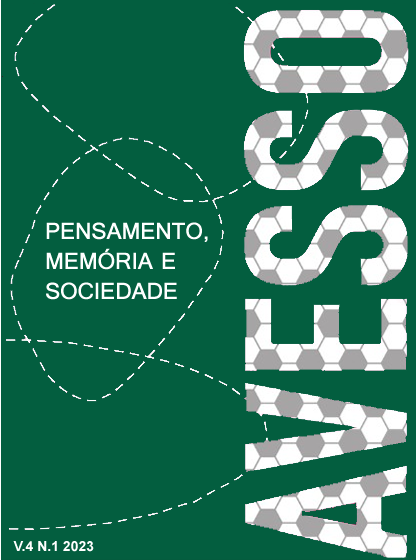Emergência Climática e El Niño
Estratégias de Resiliência no Semiárido Nordestino
DOI :
https://doi.org/10.23925/2675-8253.63801Mots-clés :
El Niño, Emergência Climática, Adaptação, Resiliência, NordesteRésumé
Parte da região do nordeste do Brasil, é nomeada de semiárido devido a sua característica biofísica, de secas e uma predominância de espécies de arvores arbustivas e herbáceas que a classifica como o bioma caatinga. Segundo dados do Instituto Brasileiro de Geografia e Estatística - IBGE a região Semiárida do país, contém uma extensão total de 982.563,3 km², sendo 89,5%, da região do nordeste, estendendo-se aos estados como Maranhão, e o Estado de Minas Gerais, situados na Região Sudeste. O Nordeste possui um longo histórico de grandes secas, de acordo com Melo (1999) ao passar dos anos e com a criação de novas tecnologias, passa-se a saber que a ocorrência de secas no Nordeste estava ligada ao fenômeno do El Niño. O El Niño e La Niña são fenômenos climáticos que ocorrem no Oceano Pacífico e afetam o clima global. O El Niño envolve o aquecimento das águas do mar, enquanto a La Niña envolve o resfriamento. Ambos têm impactos significativos nas condições meteorológicas ao redor do mundo e são monitorados de perto por cientistas e especialistas em clima. El Niño é um fenômeno meteorológico de escala global, resultante do aquecimento diferenciado do Oceano Pacífico, provocando alterações no regime de precipitações atmosféricas em várias partes da terra. No Brasil, ocorre uma redução de chuvas nas regiões Norte e Nordeste, e um aumento na região Sul, em geral, o El Niño, embora fraco, no ano de 1992-93, afetou a vida de 8 milhões e 500 mil pessoas (DE MELO, 1999).
Esta pesquisa tem como metodologia principal a revisão bibliográfica de textos que relatam os efeitos do El Niño no Nordeste, chegando à conclusão de que a emergência climática é um sinal totalmente vermelho e perigoso em anos de El Niño. Por fim, mapeia-se ações e projetos que estejam atuando no Nordeste e que estejam pensando em como se adaptar aos efeitos que o El Niño pode causar futuramente. Além disso, elenca-se quais são os principais atores que atuam na região, visando à adaptação e à segurança das comunidades locais em relação às mudanças climáticas.
Références
ACSELRAD, Henri; MELLO, Cecília Campello Amaral; BEZERRA, Gustavo das Neves. O que é justiça ambiental? Rio de Janeiro, Garamond, 2009.
AQUALUZ. SDW, [S. l.], p. 3, 1 jan. 2021. Disponível em: https://sdwforall.com/tecnologias/aqualuz. Acesso em: 30 set. 2023.
ARAÚJO, Rosimeire Gonzalez et al. A influência do evento El Niño-Oscilação Sul e Atlântico Equatorial na precipitação sobre as regiões norte e nordeste da América do Sul. Acta Amazônica, v. 43, p. 469-480, 2013.
ARAUJO, Paulo Henrique Cirino. Eventos climáticos extremos: os efeitos dos fenômenos El Niño e La Niña sobre a produtividade agrícola das Regiões Nordeste e Sul do Brasil. Dissertação de Mestrado. Economia Aplicada. Universidade Federal de Viçosa, Minas Gerais, 2012.
ARTAXO, Paulo. Mudanças climáticas e o Brasil. Revista USP, n. 103, p. 8-12, 2014. https://www.revistas.usp.br/revusp/article/view/99191
ASHOK, Karumuri; YAMAGATA, Toshio. The El Nino with a Difference. Nature, Nature, v. 461, p. 481-484, 2009.
BOLETIM MENSAL No. 01: PAINEL EL NIÑO 2023-2024. Painel El Niño , [S. l.], p. 1-25, 20 set. 2023. Disponível em: https://portal.inmet.gov.br/uploads/notastecnicas/El-Ni%C3%B1o-2023_boletim-setembro.pdf. Acesso em: 4 out. 2023.
COSTA, Carla. Cronologia resumida da Guerra de Canudos. Museu da República. IBRAM/MinC, 2017.
COSTA, José de Araújo. O fenômeno El Niño e as secas no Nordeste do Brasil. Revista Científica do Instituto Federal de Alagoas, v. 3, n.1, 2012.
DAVIS, Mike. Holocaustos Coloniais: A criação do terceiro mundo. São Paulo, Veneta, 2022.
EL NIÑO: Previsões indicam chegada do fenômeno nos próximos meses. Instituto Nacional de Meteorologia No Brasil - INMET, p. 1-4, 19 abr. 2023. Disponível em: https://portal.inmet.gov.br/noticias/el-ni%C3%B1o-previs%C3%B5es-indicam-chegada-do-fen%C3%B4meno-nos-pr%C3%B3ximos-meses. Acesso em: 25 jun. 2023.
INFRAESTRUTURA Natural para a Água. Programa de Florestas / WRI Brasil, [S. l.], p. 1-4, 2 out. 2017. Disponível em: https://www.wribrasil.org.br/projetos/infraestrutura-natural-para-agua. Acesso em: 25 jun. 2023.
MELO, Josemir Camilo de. O fenômeno El Niño e as secas no Nordeste do Brasil. Raízes: Revista de Ciências Sociais e Econômicas, v. 20, p. 13-21, 1999.
PBMC- Painel Brasileiro. Base científica das mudanças climáticas. Contribuição do Grupo de Trabalho, v. 1, 2014.
UM MILHÃO de Cisternas Rurais - ASA Brasil - ASA Brasil. ASA Brasil, [S. l.], p. 1-2, Disponível em: https://www.asabrasil.org.br/116-acervo/o-candeeiro/1046-um-milh%C3%A3o-de-cisternas-rurais. Acesso em: 26 jun. 2023.
VOITURIEZ, Bruno; JACQUES, Guy. Ela Niño: fact and Fiction. Paris: UNESCO, 2000. https://unesdoc.unesco.org/ark:/48223/pf0000120453
Téléchargements
Publié-e
Comment citer
Numéro
Rubrique
Licence
© Revista Avesso: Pensamento, Memória e Sociedade 2024

Cette œuvre est sous licence Creative Commons Attribution - Pas d'Utilisation Commerciale - Partage dans les Mêmes Conditions 4.0 International.














